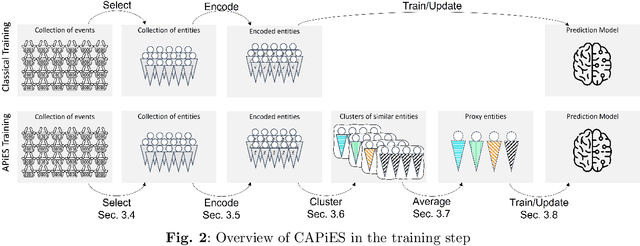Clustering-based Aggregations for Prediction in Event Streams
Paper and Code
Oct 18, 2022



Predicting the behaviour of shoppers provides valuable information for retailers, such as the expected spend of a shopper or the total turnover of a supermarket. The ability to make predictions on an individual level is useful, as it allows supermarkets to accurately perform targeted marketing. However, given the expected number of shoppers and their diverse behaviours, making accurate predictions on an individual level is difficult. This problem does not only arise in shopper behaviour, but also in various business processes, such as predicting when an invoice will be paid. In this paper we present CAPiES, a framework that focuses on this trade-off in an online setting. By making predictions on a larger number of entities at a time, we improve the predictive accuracy but at the potential cost of usefulness since we can say less about the individual entities. CAPiES is developed in an online setting, where we continuously update the prediction model and make new predictions over time. We show the existence of the trade-off in an experimental evaluation in two real-world scenarios: a supermarket with over 160 000 shoppers and a paint factory with over 171 000 invoices.
 Add to Chrome
Add to Chrome Add to Firefox
Add to Firefox Add to Edge
Add to Edge